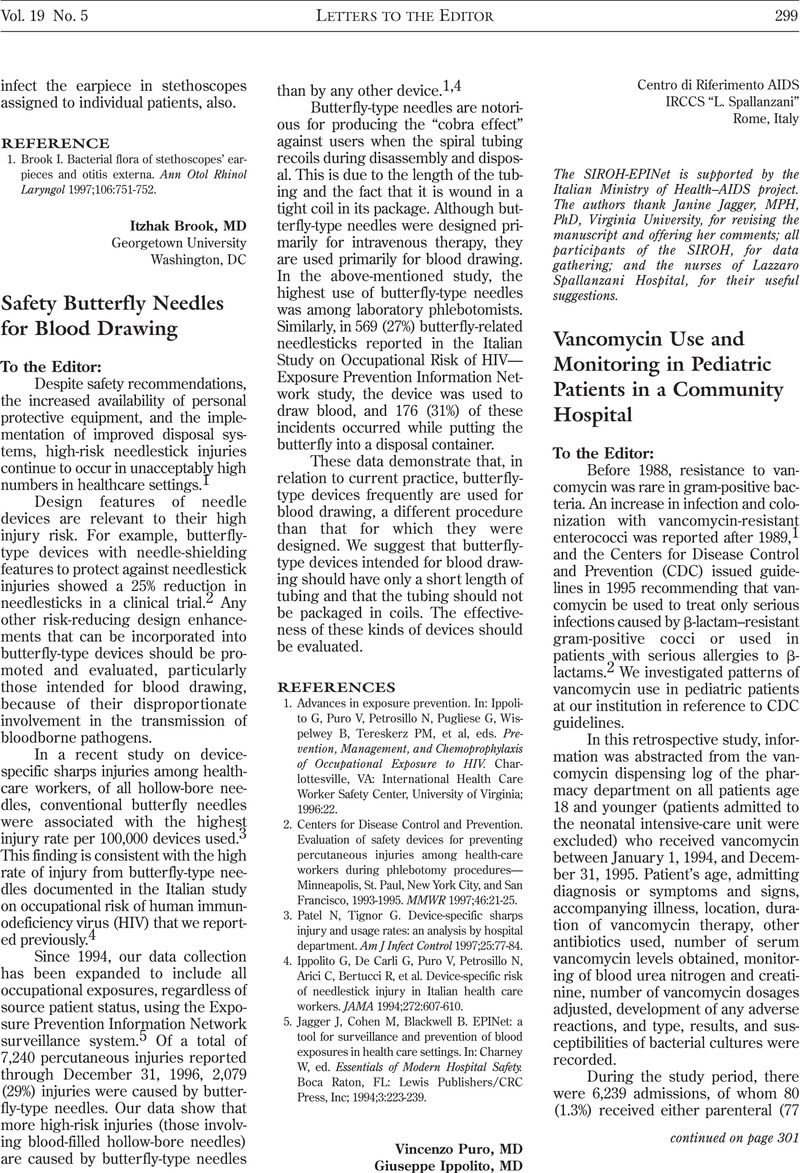No CrossRef data available.
Article contents
Safety Butterfly Needles for Blood Drawing
Published online by Cambridge University Press: 02 January 2015
Abstract
An abstract is not available for this content so a preview has been provided. As you have access to this content, a full PDF is available via the ‘Save PDF’ action button.

- Type
- Letters to the Editor
- Information
- Copyright
- Copyright © The Society for Healthcare Epidemiology of America 1998
References
REFERENCES
1. Advances in exposure prevention. In: Ippolito, G, Puro, V, Petrosillo, N, Pugliese, G, Wispelwey, B, Tereskerz, PM, et al, eds. Prevention, Management, and Chemoprophylaxis of Occupational Exposure to HIV. Charlottesville, VA: International Health Care Worker Safety Center, University of Virginia; 1996:22.Google Scholar
2.
Centers for Disease Control and Prevention. Evaluation of safety devices for preventing percutaneous injuries among health-care workers during phlebotomy procedures— Minneapolis, St. Paul, New York City, and San Francisco, 1993-1995. MMWR
1997;46:21–25.Google Scholar
3.
Patel, N, Tignor, G. Device-specific sharps injury and usage rates: an analysis by hospital department. Am J Infect Control
1997;25:77–84.Google Scholar
4.
Ippolito, G, De Carli, G, Puro, V, Petrosillo, N, Arici, C, Bertucci, R, et al. Device-specific risk of needlestick injury in Italian health care workers. JAMA
1994;272:607–610.Google Scholar
5.
Jagger, J, Cohen, M, Blackwell, B. EPINet: a tool for surveillance and prevention of blood exposures in health care settings. In: Charney, W, ed. Essentials of Modern Hospital Safety. Boca Raton, FL: Lewis Publishers/CRC Press, Inc; 1994;3:223–239.Google Scholar


